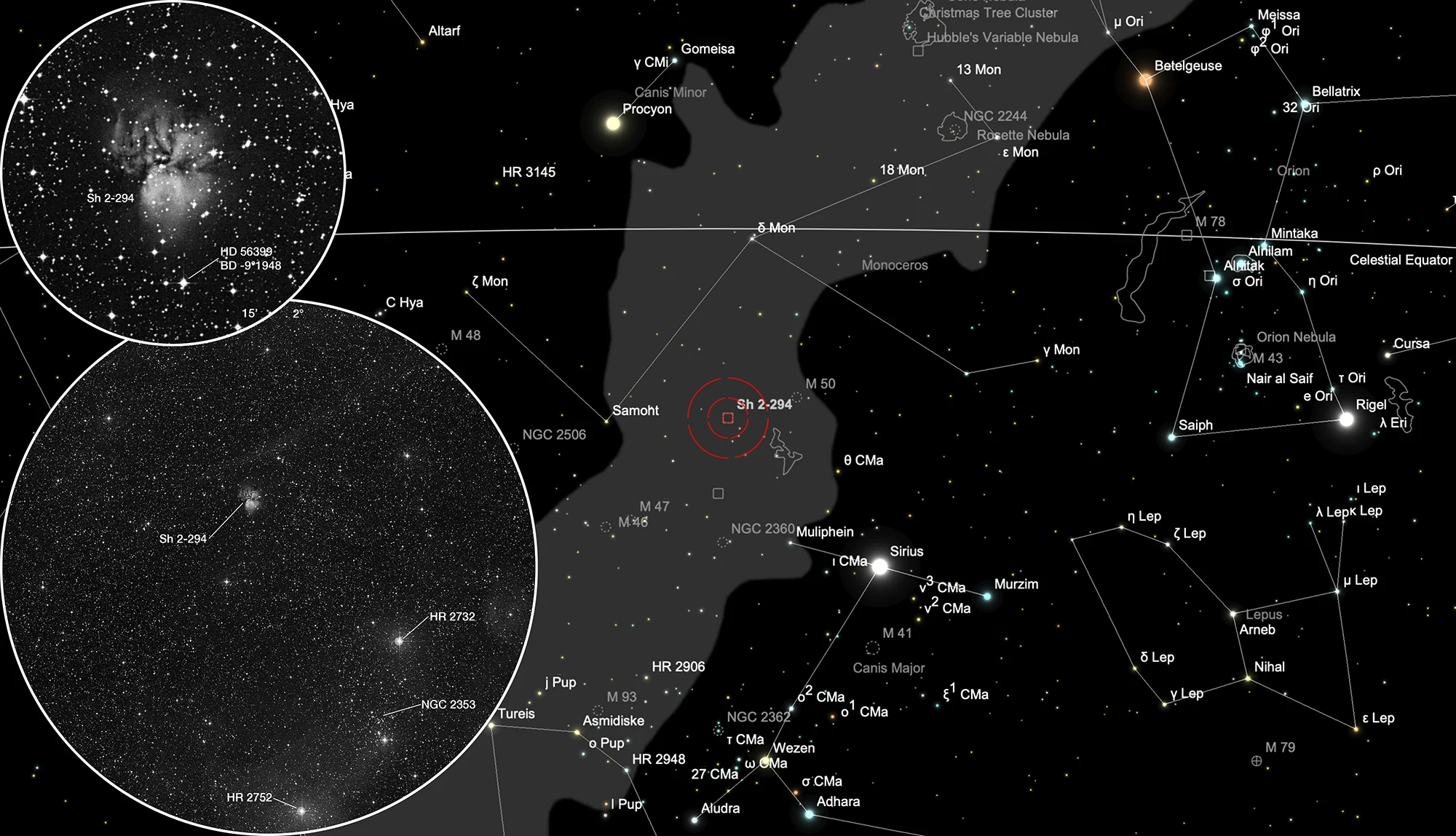Octopus Nebula (Sh 2-294)

History
This nebula was discovered in 1950 by German astronomer Wolfgang Strohmeier during a photographic survey of the winter Milky Way. He used a Schneider Xenone 1:2 lenses with 125 mm focal length. Of 42 nebulae this one was listed as number 8 (Strohmeier 8) with a size of 4x6 arcminutes, lying north of 9.7m star BD -9°1948. [40]
In 1955 the Russian astronomers Grigory Abramovich Shajn and Vera Fedorovna Gaze at the Simeis Observatory on the Crimean Peninsula published their Gaze-Shajn catalogue of emission nebula. This nebula was there listed as Gaze-Shajn 115. [402]
In 1959 the American astronomer Stewart Sharpless published his catalogue of 313 H-II regions discovered on the 48-inch Schmidt telescope photo plates of the «Palomar Observatory Sky Survey». The nebula is listed there as number 294 (S 294, Sh 2-294, Sharpless 2-294) with the description: Bright nebula of irregular form and amorphous structure with a diameter of 7 arcminutes. [310]
Because the nebula looks a bit like an upside-down octopus with is arms curled in, it got the nickname «Octopus Nebula».
Physical Properties
Sh 2-294 is a H II region ionized by a single B0V star. It features several infrared excess sources, a photodissociation region, and also a group of reddened stars at its border. 36 young stellar object have been identified with an estimated age of ∼4.5 × 106 years. The distance to Sh 2-294 is uncertain and varies from 3.2 kpc to 4.8 kpc [41]
Finder Chart
The nebula Sh 2-294 is located in the constellation Monoceros, about 1° north-east to the open cluster NGC 2353. On 9 January it is in opposition to the Sun and culminates at local midnight. The best season for observation is from October until March.
